#Jalalabad
Text
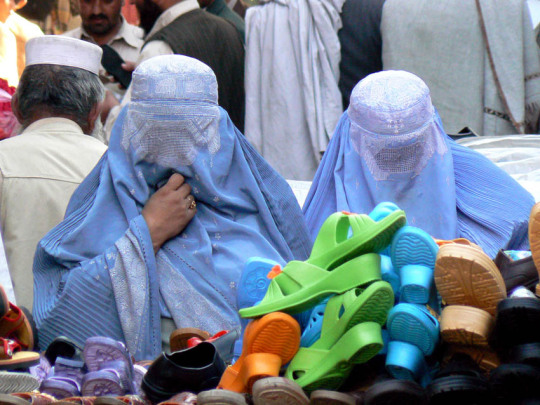
Two afghan women wearing burqas shop in the Jalalabad bazaar in eastern Afghanistan.
Taken on November 25, 2006
14 notes
·
View notes
Text
“ Kabul (5900 ft., 36 miles from Charikar), June 11th [1934].
From Herat to Kabul we have come 930 miles, of which forty-five were on horseback.
A winding hill-road brought us down from the Charikar plateau to a smaller plain inside a ring of mountains; running water and corrugated iron glinted among its trees. At the entrance to the capital the police deprived the Vicar and the Curate of their rifles, to their great distress; but being in turbans, no one would believe they were government servants. We drove to the Foreign Office, where hot-red English ramblers were climbing over iron railings; to the hotel, where there was writing-paper in each bedroom; to the Russian Legation, where they had had no answer to M. Bouriachenko’s telegram; to the German shop, where they refused to sell us hock without a permit from the Minister of Trade; and finally to our Legation, where the Minister, Sir Richard Maconochie, has asked us to stay. It is a white house, dignified with pillars and furnished as it would be at home, without any mosquitonets or fans to remind one of the Orient. Christopher says he finds it peculiar to be in a room whose walls aren’t falling down.
Opinion at the Legation agrees on the silliness of refusing the Russian diplomats in Kabul transit visas through India. Even if they go as far towards the frontier as Jelallabad, the Government of India sends in official complaints. The result is a sort of gentlemen’s agreement between the two Legations and the Afghan Government that the English shall not travel in the north of the country and the Russians in the south. That is why the authorities at Mazar could not allow us to the Oxus, though they would not admit such a reason lest it appear a limitation of their sovereignty. We were lucky to have got as close as we did, particularly as it appears that Haji Lai Mohammad, who bought the car, and our chauffeur Jamshyd Taroporevala, spread a tale that we were Secret Service agents engaged in map-making. Next time I do this kind of journey, I shall take lessons in spying beforehand. Since one has to put up with the disadvantages of the profession anyhow, one might as well reap some of its advantages, if there are any.
British diplomacy in Kabul just now hangs on the Minister’s roses. At the King’s birthday party, on June 3rd, they were in full flower, and the Afghans, who are all rose-lovers, had never seen such big formal blooms. Next morning, visiting cards from the Minister of Court were fluttering from the finest trees; they had been left by his gardener in the night. Now all the other ministers want cuttings too, and are also in a turmoil over the peonies, which have been promised them for next year.
Magnificent as the formal roses are, I yet prefer an Afghan tree which stands by the gate in front. It is fifteen feet high and covered with such a profusion of white blossoms that hardly a leaf is visible. “
Robert Byron, The Road to Oxiana; first published by Macmillan & Co. Ltd, London, 1937.
#Robert Byron#The Road to Oxiana#Afghanistan#central Asia#XX century British literature#travel literature#English literature#Hindu Kush mountains#20th century#1930s#modernization#European empires#British Empire#British India#South Asia#Russian Empire#inter-war period#Kabul#Ghazni#Jalalabad#Charikar
7 notes
·
View notes
Text
Chain Link Fencing Fabrication Work in Punjab

MH Infra Project is a leading Interior & Exterior Turnkey Project Solution Provider and Chain Link Fencing Fabrication Work in Punjab, India.
MH Infra Project was established in 2010, We specialize in crafting interior spaces that are both stunning and functional, designed to meet your unique requirements.
We offer a wide range of fabrication services, including railings, pipeline projects, chain link fencing, PEB (Pre-Engineered Building) fabrication, custom fabrication, structural fabrication, and roofing structures.
Chain Link fencing fabrication work involves the manufacturing and installation of chain Link fences, which are composed of interwoven metal wires to create a sturdy barrier.
MH Infra Project proudly provides high-quality, customized chainlink fencing fabrication services to meet your individual requirements.
What sets us apart is our meticulous attention to detail and commitment to excellence. From the initial consultation to the final installation, we work closely with our clients to understand their requirements and vision.
Applications:
Residential Areas
Commercial Properties
Industrial Site
Sports Facilities
Agricultural Settings
Temporary Events
Features:
Cost-Effectiveness
Aesthetic Appeal
Eco-Friendly
Low Maintenance
Quick Installation
MH Infra Project is a leading Interior & Exterior Turnkey Project Solution Provider and Chain Link Fencing Fabrication Work in Punjab and locations such as Firozpur, Dhilwan, Dasuya, Dinanagar, Sham Churasi, Karoran, Samrala, Amritsar, Raikot, Pathankot, Malaut, Kurali, Mandi Gobindgarh, Jaitu, Nabha, Payal, Balachaur, Muktsar, Moonak, Khamanon, Batala, Phagwara, Machhiwara, Ajnala, Sultanpur Lodhi, Tarn Taran, Maur, Zira, Alawalpur, Patiala, Ghagga, Kot Kapura, Gobindgarh, Kapurthala, Pattran, Jalalabad, Bagh Purana, Bathinda, Nawashahr, Budhlada, Dhanaula, Banur.
If you have any questions or require further information, please feel free to contact us.
Read the full article
#AestheticAppeal#Ajnala#Alawalpur#Amritsar#BaghPurana#Balachaur#Banur#Batala#Bathinda#Budhlada#ChainLinkFencing#ChainLinkFencingFabrication#ChainLinkFencingFabricationWork#ChainLinkFencingFabricationWorkinIndia#ChainLinkFencingFabricationWorkinPunjab#Cost-Effectiveness#Dasuya#Dhanaula#Dhilwan#Dinanagar#Eco-Friendly#Firozpur#Ghagga#Gobindgarh#India#Jaitu#Jalalabad#Kapurthala#Karoran#Khamanon
0 notes
Text
Supplier of SS Dairy Valves and Fittings in Punjab

Meghmani Metal Industries is one of the leading Manufacturer and Supplier of SS Dairy Valves and Fittings in Punjab, India.
Established in 2011, Meghmani Metal Industries is dedicated to providing exceptional products to the metal industry, emphasizing customer satisfaction and environmental responsibility.
We provide an extensive selection of stainless steel products such as plates, coils, bars, pipes, tubes, flanges, valves, fittings, fasteners, channels, and flats.
We supply SS dairy valves and fittings, specially crafted for dairy processing equipment, guaranteeing sanitary and effective performance. Our products are manufactured using premium materials and advanced technology for superior quality.
SS dairy valves and fittings feature user-friendly operation, high tensile strength, corrosion resistance, durability, and excellent weldability, ensuring dependable performance and extended service life.
Types of SS Dairy Valves and Fittings:
Sanitary ball valves
Butterfly valves
Diaphragm valves
Elbows and tees
Reducers and adapters
Sight glasses
Applications:
Paper & Pulp Industry
Structural Pipe
Food Processing Industry
Chemical Industry
Fabrication Industry
Water Supply Systems
Meghmani Metal Industries is one of the leading Manufacturers and Supplier of SS Dairy Valves and Fittings in Punjab and locations such as Firozpur, Dhilwan, Dasuya, Dinanagar, Sham Churasi, Karoran, Samrala, Amritsar, Raikot, Pathankot, Malaut, Kurali, Mandi Gobindgarh, Jaitu, Nabha, Payal, Balachaur, Muktsar, Moonak, Khamanon, Batala, Phagwara, Machhiwara, Ajnala, Sultanpur Lodhi, Tarn Taran, Maur, Zira, Alawalpur, Patiala, Ghagga, Kot Kapura, Gobindgarh, Kapurthala, Pattran, Jalalabad, Bagh Purana, Bathinda, Nawashahr, Budhlada, Dhanaula, Banur.
If you have any questions or require further information, please feel free to contact us.
Read the full article
#Ajnala#Alawalpur#Amritsar#BaghPurana#Balachaur#Banur#bars#Batala#Bathinda#Budhlada#Butterflyvalves#channels#coils#Dasuya#Dhanaula#Dhilwan#Diaphragmvalves#Dinanagar#Elbowsandtees#fasteners#Firozpur#fittings#Flanges#Ghagga#Gobindgarh#Jaitu#Jalalabad#Kapurthala#Karoran#Khamanon
0 notes
Text
Supplier of PPR Pipe Fittings in Punjab

Parthiv Polymers is one of the leading Manufacturer and Supplier of PPR Pipe Fittings in Punjab, India.
Established in 1998, Parthiv Polymers is a company certified with ISO 9001:2015, committed to delivering quality products and services.
We offer a comprehensive range of products including PP, PVDF, and HDPE valves, fittings, and pipes, catering to diverse industries with options like ball valves, foot valves, and diaphragm valves.
PPR Pipe Fittings are components used to connect, control, or adapt PPR (Polypropylene Random Copolymer) pipes in plumbing and fluid handling systems. They ensure leak-proof connections and smooth fluid flow.
PPR Pipes boast superior physical properties, featuring a temperature range of -20°C to 95°C, guaranteeing durability and dependable performance in various applications.
PPR Pipes Feature a Unique 3-layer Design:
UV-stabilized outer layer
PP-RC middle layer
Anti-microbial inner layer
Applications:
Industrial piping for aggressive fluids
Pharmaceutical applications
Compressed air supply systems
Indoor and outdoor hot & cold water piping
Solar water heating systems
Parthiv Polymers is one of the leading Manufacturer and Supplier of PPR Pipe Fittings in Punjab and locations such as Firozpur, Dhilwan, Dasuya, Dinanagar, Sham Churasi, Karoran, Samrala, Amritsar, Raikot, Pathankot, Malaut, Kurali, Mandi Gobindgarh, Jaitu, Nabha, Payal, Balachaur, Muktsar, Moonak, Khamanon, Batala, Phagwara, Machhiwara, Ajnala, Sultanpur Lodhi, Tarn Taran, Maur, Zira, Alawalpur, Patiala, Ghagga, Kot Kapura, Gobindgarh, Kapurthala, Pattran, Jalalabad, Bagh Purana, Bathinda, Nawashahr, Budhlada, Dhanaula, Banur.
If you have any questions or would like more details, please contact us.
Read the full article
#Ajnala#Alawalpur#Amritsar#andHDPEvalves#andpipes#BaghPurana#Balachaur#ballvalves#Batala#Bathinda#Budhlada#catering#Dasuya#Dhanaula#Dhilwan#Dinanagar#Firozpur#Fittings#footvalves#Ghagga#Gobindgarh#Jaitu#Jalalabad#Kapurthala#Karoran#Khamanon#KotKapura#Kurali#Machhiwara#Malaut
0 notes
Text
Afghanistan
Afghanistan is a landlocked country in South Asia, located at the crossroads of Central Asia and South Asia. It is bordered by Pakistan to the east and south, Iran to the west, Turkmenistan, Uzbekistan, and Tajikistan to the north, and China to the northeast. Afghanistan has a long and complex history, and has been the site of many conflicts and invasions throughout its history. In this essay, we…
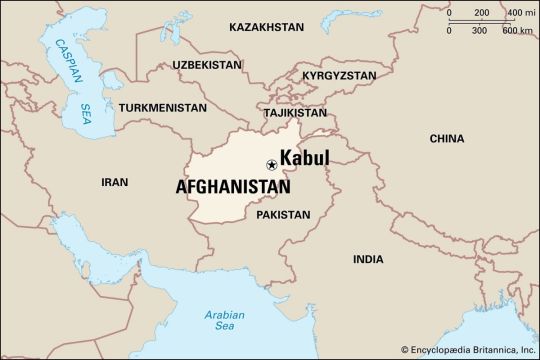
View On WordPress
#Achaemenid Empire#Alexander the Great&039;s empire#ashak#Ashraf Ghani#Central Asia#Hephthalite Empire#Herat#Hindu Kush#ISIS#Islam#Jalalabad#Kabul#kabuli palaw#Kandahar#landlocked#mantu#Mazar-i-Sharif#Mohammed Daoud Khan#mountainous#Pamir mountain ranges#Silk Road#South Asia#Taliban#the Kushan Empire#the Maurya Empire
0 notes
Text
instagram
Episode 133: The Haunting of OP Rock and The Ghosts of the War in Afghanistan
Image 01: WELCOME TO THE PREMIERE!!!!
Image 02: In the village of Qalat, a castle fortress called the Bala Haizar has towered over the town since Alexander the Great himself ordered it to be built 2,000 years ago.
Image 03: (top) Afghan children play on the remains of an old destroyed Soviet Union tank in Jalalabad 2012. (Noorullah Shirzada/AFP/Getty Images) & (bottom) the remains of two 1980s Soviet armored personnel carriers outside the Amir Agha villages
Image 04: Tutankhamun's death mask features lapis lazuli from the Sar-i-sang mines, which are the oldest mines in the world. Around 2500 BC, lapis lazuli was exported from Afghanistan to Iraq for the harps buried with the kings of the ancient city of Ur
Image 05: Map of the Silk Road, which passed through Afghanistan
Image 06: Ahmad Zahir aka “The Afghan Elvis” music video - Don’t even try to deny this rizz
Image 07: OP Rock, photo 1 & OP Rock, photo 2
Image 08: THE GOLDEN ERA - Picture taken in 1962 at the Faculty of Medicine in Kabul of two Afghan medicine students listening to their professor (at right) as they examine a plaster cast showing a part of a human body vs. Afghan girls hold illegal protest to demand the right to education in a private home in Kabul, Afghanistan, Tuesday, Aug. 2, 2022. (AP Photo/Ebrahim Noroozi)
Image 09: Afghanistan’s modern provinces
Image 10: Headline from The Guardian in 2009 (Top) Farmer Mohammed Yaqoob in a poppy field in Musa Qala, Helmand province. (Bottom) Photograph: Shah Meer Baloch/The Guardian
#The Haunting of OP Rock and The Ghosts of the War in Afghanistan#Let's Get Haunted#Bala Haizar#Jalalabad#Tutankhamun's death mask#Instagram
1 note
·
View note
Text
Horny blonde fingering in stockings
Desi bhabi blowjob
Cadence Lux Rolling Around In Bed
Hot indian girl sex
Hot transexual chick tugging on her dick
Cute chubby trans chick tugs her penis
Thot gets fucked while her young ones sleeping upstairs
Philly light skin fatass ig too tolerant
Sandra Luberc deep gonzo style ass anal sex by Ass Traffic
PropertySex - Crazy hot black real estate agent persuaded to make sex video
#Erickson#preinspect#nonculture#cisterns#asgmt#abjudicator#archpoet#pseudohyoscyamine#Wheatstone#necrophagous#venie#Vosges#aerophysicist#Cunaxa#epicanthic#Jalalabad#vitiligoidea#colourlessly#Peripatopsis#Nickolas
0 notes
Text
IPL Auction 2023: Meet Jalalabadiya Narayan, who gave sleepless nights to all the franchises
IPL Auction 2023: Meet Jalalabadiya Narayan, who gave sleepless nights to all the franchises
highlights
Know who is Ramesh Kumar
Ramesh is famous by the name Jalalabadia Narayan
Ramesh Kumar is bowling allrounder
new Delhi. In the auction of IPL 2023 (IPL 2023), only a few hours are left for counting. All the teams have made their important strategy regarding the upcoming auction. Meanwhile, the name of a young all-rounder of the country is in big headlines. People also call this player…
View On WordPress
#auction#Cricket#cricket news#Cricket News in Hindi#franchises#gave#Indian Premier League#indian premier league 2023#IPL#ipl 2023#IPL auction#IPL Auction 2023#Jalalabad#Jalalabadiya#meet#Narayan#nights#Ramesh Kumar#sleepless#Sports#Sunil Narine
0 notes
Text
GATTI, CANI E “DANNI COLLATERALI”
Fonte: Center For An Informed America
Di Dave McGowan16 ottobre 2001
“Non sono molti i testimoni che raccontano cosa sia successo mercoledì sera al villaggio di Khorum nell’Afghanistan orientale; non ci sono molti sopravvissuti. Una cosa è certa. Il modesto insieme di capanne di fango e recinti per il bestiame in questo villaggio, a circa 38 miglia dalla città di Jalalabad, nell’Afghanistan…
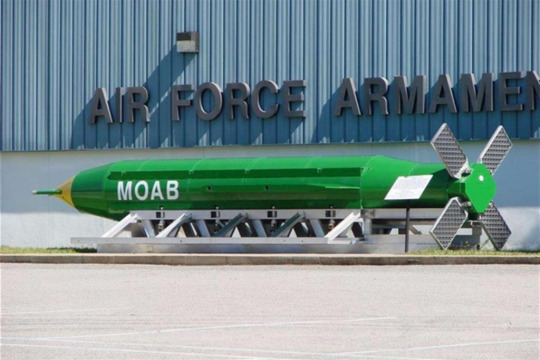
View On WordPress
#Afghanistan#Attentato#Bombardamento#Dave McGowan#Deep State#Democrazia#Fake news#Jalalabad#Khorum#MSM#Pentagono#US Army
0 notes
Text
Roofing Structure Fabrication in Punjab

MH Infra Project is one of the leading Industrial, Commercial, and Roofing Structure Fabrication in Punjab, India.
MH Infra Project was founded in 2010, specializing in crafting exceptional and practical interior spaces customized to meet your unique needs.
We offer services including railing fabrication, PFB fabrication, structure fabrication, pipeline projects, custom fabrication, roofing structure, and chainlink fencing fabrication.
Roofing structure fabrication entails manufacturing and assembling the necessary components for building roofs, ensuring precise construction and assembly of trusses, rafters, and other elements essential for roof installation.
The fabrication process ensures that these components are precisely manufactured to meet the specifications of the building design and are ready for installation to create a durable and weather-resistant roofing system.
Elements of Roofing Structure:
Roofing Material: Asphalt, Metal, Tiles, Wood, Membrane
Underlayment: Weather Shield
Roof Framing: Trusses, Rafters
Eaves/Overhangs: Extended Protection
Ridge/Hip: Peak Points
Durability: Longevity
Weather Resistance: Element Protection
Applications:
Infrastructure Projects
Recreational Facilities
Commercial Buildings
Agricultural Structures
Residential Buildings
MH Infra Project is one of the leading Industrial, Commercial and Roofing Structure Fabrication in Punjab and locations such as Firozpur, Dhilwan, Dasuya, Dinanagar, Sham Churasi, Karoran, Samrala, Amritsar, Raikot, Pathankot, Malaut, Kurali, Mandi Gobindgarh, Jaitu, Nabha, Payal, Balachaur, Muktsar, Moonak, Khamanon, Batala, Phagwara, Machhiwara, Ajnala, Sultanpur Lodhi, Tarn Taran, Maur, Zira, Alawalpur, Patiala, Ghagga, Kot Kapura, Gobindgarh, Kapurthala, Pattran, Jalalabad, Bagh Purana, Bathinda, Nawashahr, Budhlada, Dhanaula, Banur.
If you have any queries or would like more information, don't hesitate to contact us.
Read the full article
#Ajnala#Alawalpur#Amritsar#BaghPurana#Balachaur#Banur#Batala#Bathinda#Budhlada#Dasuya#Dhanaula#Dhilwan#Dinanagar#Exporter#Firozpur#Ghagga#Gobindgarh#India#Jaitu#Jalalabad#Kapurthala#Karoran#Khamanon#KotKapura#Kurali#Machhiwara#Malaut#MandiGobindgarh#Manufacturer#Maur
0 notes
Photo
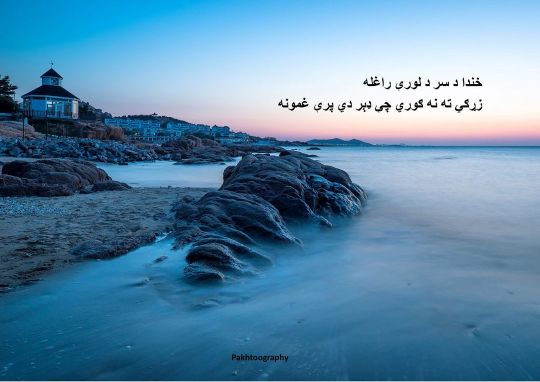
. خندا د سر د لورې راغله زړګي ته نه ګوري چې ډېر دي پرې غمونه . . . #pashto #pakhtoography #poetry #pashtopoetry #pashtopoems #beauty #afghanistan #kabul #ghazni #nangarhar #laghman #herat #jalalabad #peshawar #mary #love #decent #nature #instagram #facebook #snap #scenery #nikon #canon #photography #sony #blue #red #fresh #peace https://www.instagram.com/p/Chg01bHsQ2H/?igshid=NGJjMDIxMWI=
#pashto#pakhtoography#poetry#pashtopoetry#pashtopoems#beauty#afghanistan#kabul#ghazni#nangarhar#laghman#herat#jalalabad#peshawar#mary#love#decent#nature#instagram#facebook#snap#scenery#nikon#canon#photography#sony#blue#red#fresh#peace
1 note
·
View note
Text
#Uk current news#Ayman al-Zawahiri#eye surgeon turned terrorist#Al Qaeda chief#Jalalabad#Pakistan#Osama bin#Asian news#todays latest news#uk news
0 notes
Text
In which country is the city of Jalalabad, the capital of the Nangarhar province?

Jalalabad is the capital city of the Nangarhar Province in eastern Afghanistan. It is the fifth-largest city in the country and lies approximately 130 kilometres (80 mi) from Kabul, the capital of Afghanistan. Located at the junction of the Kabul River and the Kunar River, Jalalabad is a leading centre of social and trade activity with several major industries, including paper manufacturing, and agricultural products, such as oranges, lemons, rice, and sugar. The Nangarhar Province is one of 34 provinces of Afghanistan, with a population of 1,735,531, of which 16% live in Jalalabad.
It is said that Jalalabad was originally called Adinapur until it was renamed in honour of Mughal ruler Jalal-uddin, who reigned in the last decade of the 16th century. Since the 20th century, Jalalabad is considered one of the most important cities of the Pashtun culture. The Pashtuns, historically known as Afghans, are an Iranian ethnic group native to Central and South Asia. Pashtuns are the 26th-largest ethnic group in the world, with an estimated 350-400 Pashtun tribes and clans.
Jalalabad is one of the hottest localities in Afghanistan, with similar temperatures to Arizona in the United States. In the summer, it has been known to reach temperatures of 120 °F (49 °C). The city only receives six to eight inches (152 to 203 mm) of rainfall each year.
0 notes
Text
The Forgotten Hero: How Russia Helped Launch The Decolonial Movement in The Heart of The British Empire
Rafiq Ahmed, Who Founded the Communist Party of India in Tashkent, Gave His Descendants Both a Legacy and a Name, But Hardly Any of Them Know Why They Are Called ’Roosis’
— December 5, 2023 | RT

Rafiq ‘Roosi’ Ahmed died four decades ago, but his visits to the erstwhile Union of Soviet Socialist Republics (USSR) are forgotten, to the extent that his descendants, who continue to be known as the ‘Roosis’ (Hindi/Urdu for Russian national) of Bhopal, are unsure of the origin of the name they carry, and are ignorant of his illustrious legacy.
After battling lung cancer for three years, Comrade ‘Roosi’ died as quietly as he had lived, in the central Indian city of Bhopal at the age of 93, in 1982.
Bhopal had been run by the Nawabs during British rule, from 1818 to 1947, after which it became part of the Indian Union; since then, the socio-political fabric of the city has changed radically. Roosi’s travels to the USSR in 1920, inspired by the great revolutionary upsurge in Russia and Central Asia, have largely been forgotten.
Rafiq Ahmed's ancestral home is a stone’s throw from the picturesque Upper Lake in a typically non-descript narrow bylane in the old quarters of Bhopal, but it is easy to find – thanks to the title, Roosi. Apart from a handful of senior residents of the city, nobody quite knows the origin of this name.
His daughter-in-law Saulat has done a fine job of keeping his belongings safe – especially those pertaining to his trip to the Soviet Union in September-October 1967 to attend the 50th anniversary of the Great October Socialist Revolution – but the family’s collective knowledge is limited to his second trip to Russia, and some anecdotes from his first visit which border on the mythical.

Comrade Rafiq Ahmad, personal archive © RT
They are unaware that Roosi was among the first group of Indian revolutionaries who went to the Soviet Union to seek advice on ousting their British colonial rulers, or that he was among the first to enroll at the Indian Military Training School in Tashkent, or was the founding member of the Communist Party of India in Tashkent, or was tried and jailed for almost a year in the Peshawar Conspiracy Case.
Septuagenarian Khalid Ghani, who knows Bhopal’s history and its people like the back of his hand, attributes this to Roosi’s modest lifestyle. The Ghanis and his family have been neighbors and go back a long way. Ghani’s family used to run a sports shop on the ground floor, and Roosi’s son ran a small hotel called ‘Moonlight’ on the first floor of the same building.
When Ahmed came back from Russia in 1923, people started calling him ‘Roosi’. “He had rubbed shoulders with the top Indian and Russian revolutionaries there, risked his life, and had been jailed. But he didn’t speak about it to anyone, let alone brag about his stay there. Even after the independence of India, he did not list himself as a freedom fighter and avail benefits – such as seeking a plot of land – and secure his future. He just went back to being the person he was before he had left Bhopal. This says a lot about the kind of man he was,” says Ghani.
Modest Background
Roosi hailed from a modest background, and when he returned from Russia, he took a job as the head of the kitchen of the last ruler of Bhopal, Nawab Hameedullah Khan. Much later, when his son Jameel opened his own restaurant, Roosi started assisting him.
Jameel’s wife, Saulat, and his sister, Rafia-un-Nisa, are the two surviving members of the family who spent time with Roosi. Rafia-un-Nisa is in her late eighties and can barely speak. Saulat married into the family in 1969, five decades after Roosi returned from Russia.
Although she is alert and can recall most details about her father-in-law, she is unable to piece together the sequence of events of his life before she married into the family.
“He would be at the hotel during the day and spend the nights writing. I saw him do that for eight years. It is unfortunate that we cannot find most of his writings,” she laments. She pulls out a newspaper clipping to show that Roosi was among the first Indians to write a book on Vladimir Lenin in 1923. However, she has no idea where the book is.

Comrade Rafiq Ahmad (center) meets with youths of the Soviet Union in the city of Kirov. © Sputnik/I. Agranovskiy
Trip to Russia
Roosi’s long period of anonymity ended quite suddenly when Soviet Land magazine published an article on him in around 1966-1967. He was invited to the Soviet embassy in New Delhi and before he knew it, he was on his way to Moscow.
In between, there were mentions of him in the writings of fellow compatriots such as Shaukat Usmani, but they seem to have gone unnoticed.
Ghani recalls, “Nearly five decades after he had returned from Russia, Ahmed was invited to meet the Soviet ambassador in New Delhi. In 1967, he flew to Russia to take part in the 50th anniversary of the Great October Socialist Revolution. Later in 1972, he was acknowledged as a freedom fighter at former prime minister Indira Gandhi’s behest.”
In Moscow, he was awarded a gold medal for his struggle alongside Russian revolutionaries. After receiving the medal, he told Patriot newspaper that the revolutionaries who languished in jail and died there deserved the decoration more than him.
“Twenty of my comrades died fighting there. They were all courageous people…I think they deserved this honor much more than me,” he said, adding that he was held hostage in Kerki (in modern-day Turkmenistan) for over a month along with 36 other Indians, as well as Russian and Turkmen revolutionaries. He spoke about how the British tortured the revolutionaries.
He visited Lenin’s mausoleum and placed a wreath there. He told the newspaper New Age that he had seen Lenin addressing a meeting once, but he could not meet him in person alongside his Indian comrades as he had fallen ill, and this was his greatest misfortune. New Age newspaper then described him as a tall and energetic man.
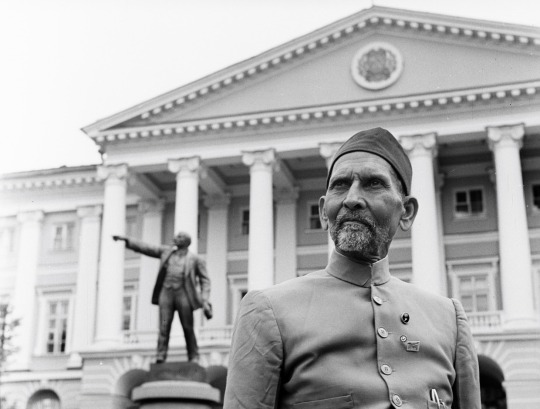
Comrade Rafiq Ahmad with a monument of Vladimir Lenin at Smolny, in Leningrad (N ow St. Petersburg). Ahmad met Lenin in 1921. © Sputnik/Mikhail Ozerskiy
Roosi reunited with other revolutionaries in Moscow; among them was Maria Fortus. She had been his teacher at the Communist University of the Toilers of the East, in Moscow, and remembered all her Indian students by their names. She recognized Roosi and asked him about the other Indian revolutionaries. He also met Avanes Baratov, an old Communist who had participated in the struggle against the counter-revolutionary bands.
Roosi, who was hosted by APN Board (Novosti Press Agency), visited Kerki, where he had fought alongside the Red Army, and Tashkent, where he went to a school where children were taught Urdu. Saulat has a couple of photos of him with Fortus and Baratov, and of his visits to Tashkent and Kerki.
Later that year, he was decorated with another medal by the Soviet Ambassador to New Delhi, N.M. Pegov.
In 1972, he was among the few freedom fighters to be invited to New Delhi by the government of India to celebrate the silver jubilee of India’s Independence.
Roosi’s Journey
A few years after his death, a portion of Roosi’s missing memoir was published in Qazi Wajdi-ul-Hussaini’s book “Barkatullah Bhopali” in 1986.
According to Hussani, when the Khilafat Movement was in full swing in 1920, the Khilafat Committee of Delhi announced a conference and an emotionally charged and rather naïve group of Bhopalis headed for Delhi, believing that this was a call to rid India of the British.
Apart from Roosi, the fiery group included Aftab Ali Khan, Mohammed Ali, Abdul Hayi, Master Mashkoor, Mohammed Khan, Ahmed Kabeer Ahmed, Mohammed Shafi and Mohammed Akhtar.
These revolutionaries stood out among the others when they literally kicked a spy out from their group, and stopped the Imam of Delhi’s Jama Masjid from leading the prayers, as he was said to be close to the British.

Comrade Rafiq Ahmad visiting USSR © RT
However, when they learnt that this was a call to protest against the British stance towards the Turkish Caliphate, a few of Roosi’s companions decided to return to Bhopal. The rest decided to go ahead with the “Hijrat” (Migration), impressed by the enthusiastic call given by Afghanistan’s King Amanullah Khan, and set out for Kabul.
They crossed the border from Peshawar and entered Afghanistan, and headed towards Kabul via Jalalabad. They met King Amanullah Khan, who received them well, but ordered that the refugees be sent to Jabal al-Siraj (a former palace he used as a military base). When the Emir promised to give them jobs, it dawned on the group that he was buying time to strike a deal with the British.
Disappointed, the group escaped from Jabal al-Siraj, covering 30 to 40 miles on foot each day, crossing difficult mountains and treacherous deserts, and reached the Turkistan border, and then finally Termez via Mazar-i-Sharif and Ghor. In Termez, they heard the fiery speech of a Russian commander who said his country had opened its doors to the workers of the world. They met the commander and went to Tashkent with his help.
In ‘The Indian Revolutionaries and the Bolsheviks - their early contacts, 1918-1922’, Arun Coomer Bose writes, “We have it on the authority of Rafiq Ahmed (Roosi) that the first four ‘muhajirs’ (Migrants), including himself, reached Kabul sometime in May 1920. They were well received, and were lodged at Jabal us-Siraz (Jabal al-Siraj), at some distance from Kabul. Others, who came after them, were also brought there, and by the beginning of July there were about a couple of hundred of them at Jabal us-Siraz (Jabal al-Siraj).”
After the founding of the Communist Party of India in Tashkent, it was decided that some of the Indian ‘Muhajirs’ would return to India to establish the foundations of a communist movement there.
Accordingly, towards the end of March 1922, a bigger group of ten, which included Roosi, set out for India via the Pamir route, writes Bose. “At Kharog they divided themselves into small groups and, barring a couple of them, succeeded in reaching Chitral or the tribal territories in the north-west of India. But, almost all of them were apprehended by the Indian police, and were tried in the Peshawar Conspiracy Case,” adds Bose.
Roosi was jailed for nearly a year. A letter issued by the Government of India on December 25, 1972 states that Roosi was arrested in the Peshawar Conspiracy Case (Crown vs Akbar Shah and seven others in the Moscow Tashkent conspiracy case) in the last week of October 1922 and released on May 18, 1923, and that he spent his term in the District Jail in Peshawar.
Saulat’s son now runs the family restaurant, which serves Mughlai cuisine. Her daughter, Bushra, who was eight years old when Roosi passed away, has taken charge of her grandfather’s papers and plans to preserve them.
The next generation of Roosis are unaware of their great-grandfather’s lineage, content with the knowledge that he visited Russia. Can, then, one blame the rest of Bhopal?
— By Lamat R Hasan, an Independent Journalist Based in Delhi
#Feature#Rafiq Ahmed#Rafiq ‘Roosi’ Ahmed#Union of Soviet Socialist Republics (USSR)#Hindi/Urdu for Russian National#Bhopal | India 🇮🇳#Russia 🇷🇺#British 🇬🇧 Empire#“Hijrat” (Migration)#Tashkent | Capital of Uzbekistan 🇺🇿 Now#Peshawar (Now City of Pakistan 🇵🇰)#Kabul | Jalalabad | Afghanistan 🇦🇫#King Amanullah Khan#Indian Revolutionaries & Bolsheviks#Turkistan#Termez | Mazar-i-Sharif | Ghor#Kabul#Muhajirs#Mughlai Cuisine
2 notes
·
View notes